Pender’s Health Promotion Model: Analysis - UTA Nursing Theory
VerifiedAdded on 2023/06/12
|21
|1805
|280
Presentation
AI Summary
This presentation provides an analysis of Nola J. Pender's Health Promotion Model (HPM), developed in 1982, which stems from expectancy-value theory and social cognitive theory. The model defines health as a positive dynamic state and focuses on individual characteristics, behavior-specific cognitions, and behavioral outcomes. It assumes individuals actively regulate their behavior and interact with the environment. The presentation covers the origins of the theory, its core ideas, assumptions, and key concepts such as the influence of inherited characters, the role of self-efficacy, and the impact of family and healthcare professionals on health behavior. It also discusses the theory's usefulness in clinical settings, its goals for nursing care, its application in practice and research, types of studies conducted using HPM, and examples of its application, such as testing nutritional behavior. Furthermore, the presentation addresses the generalizability of the theory, its strengths (simplicity, focus on disease prevention, promotion of independent nursing practice), and weaknesses (difficulty integrating perspectives, potential for confusion due to multiple concepts). The presentation concludes with a discussion on using the theory in a personal clinical setup, emphasizing its person-centered approach and benefits for disease prevention and patient autonomy. References to various studies and articles supporting the model are included.
1 out of 21
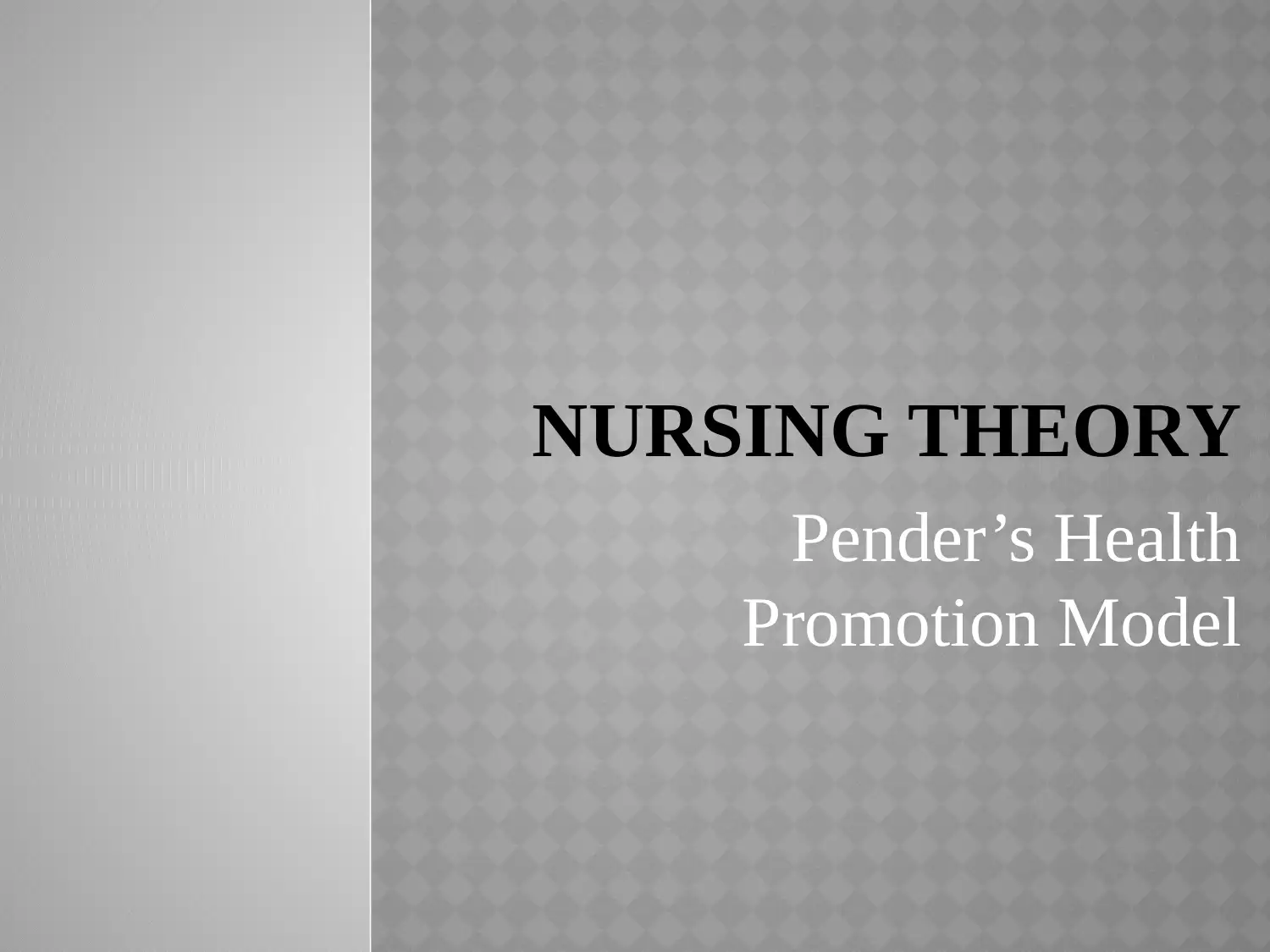
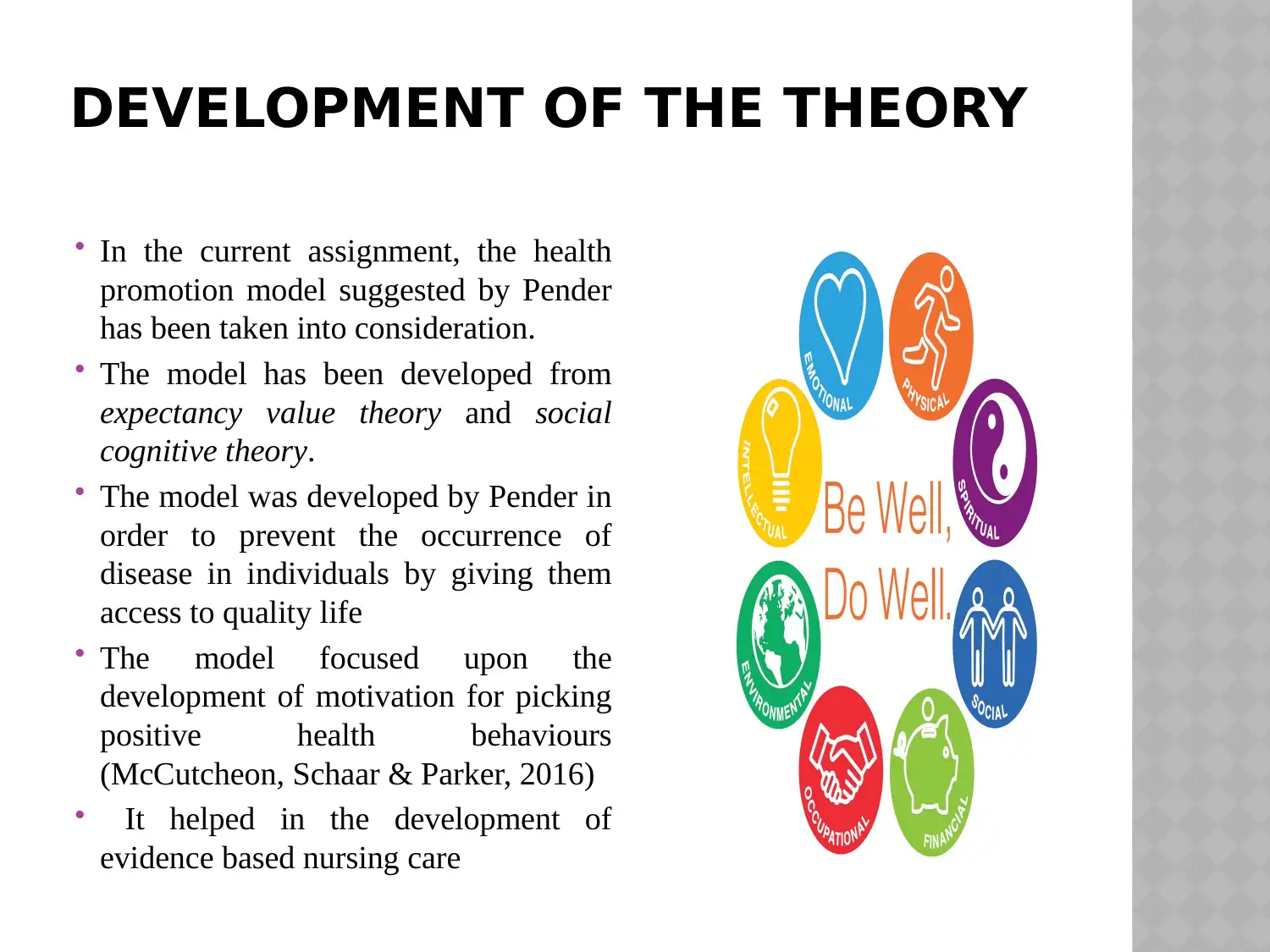
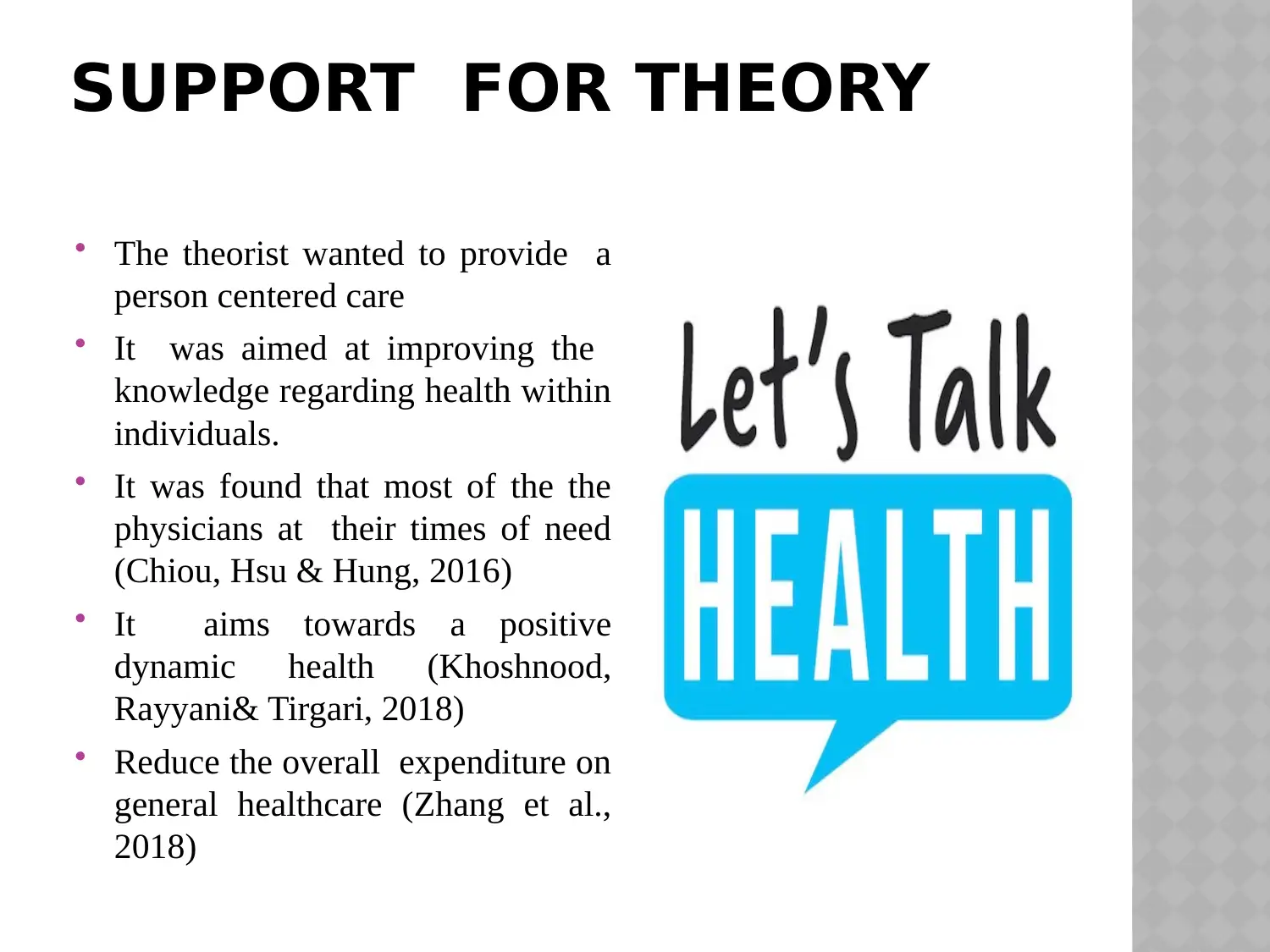

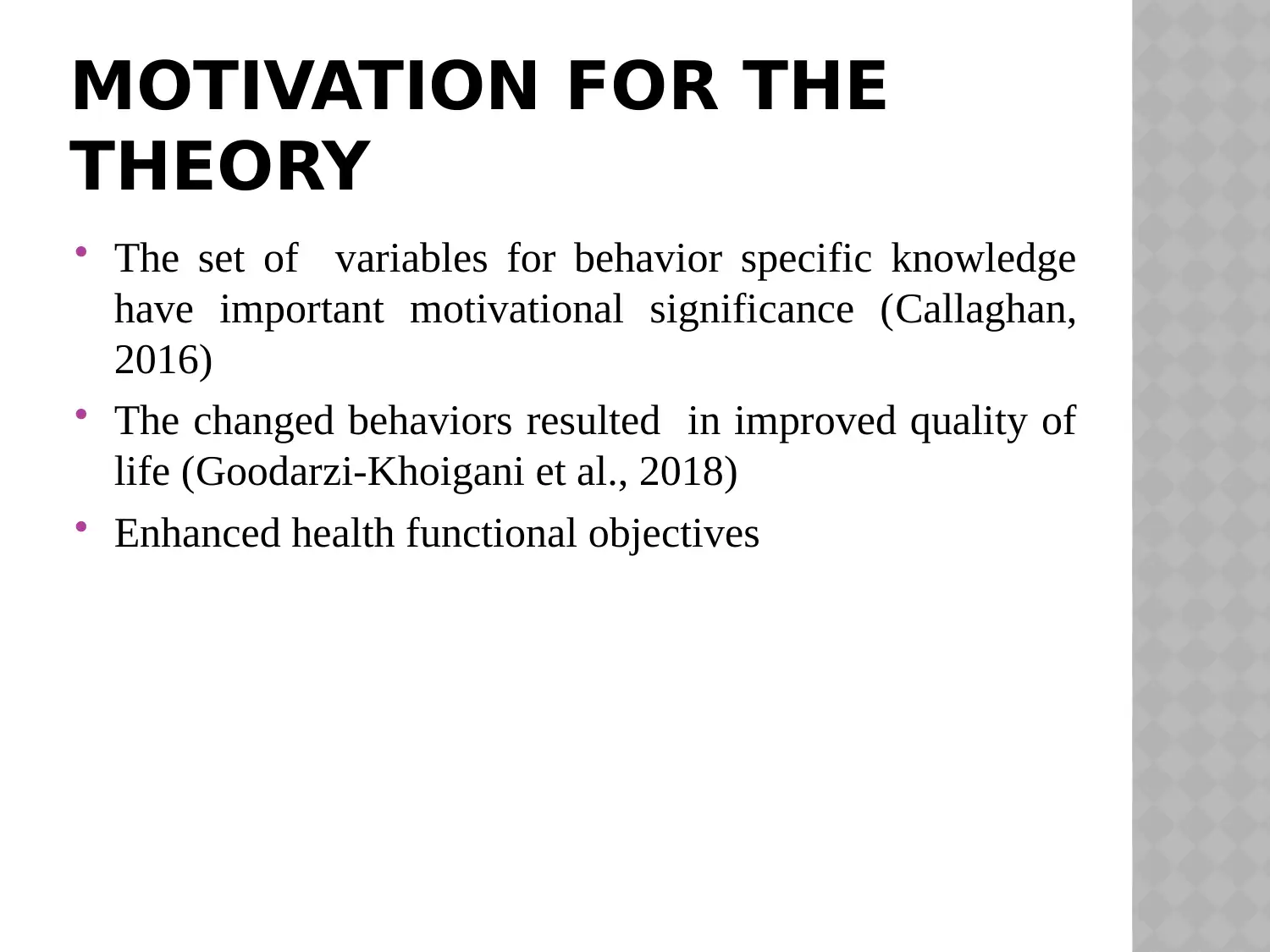
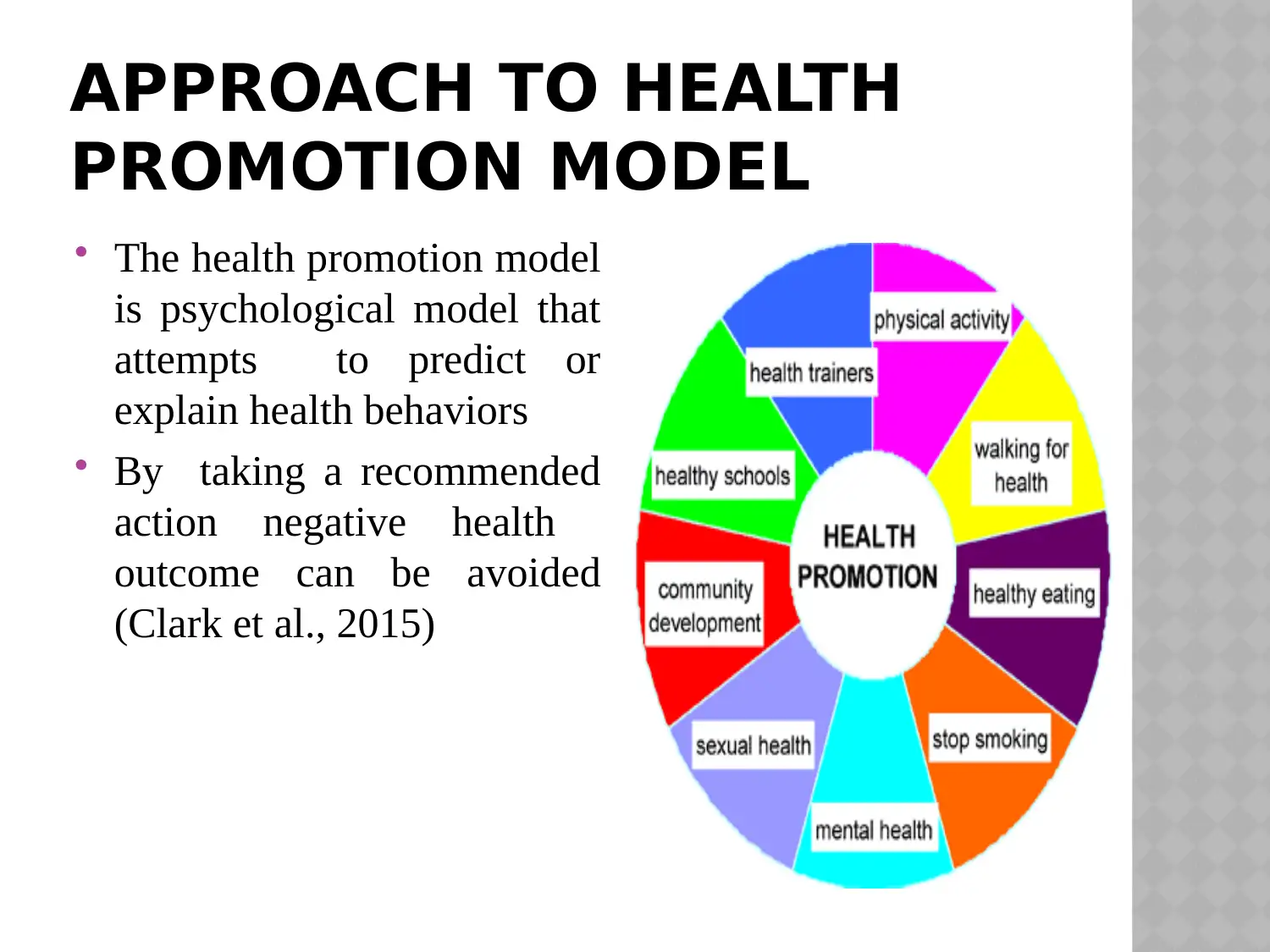
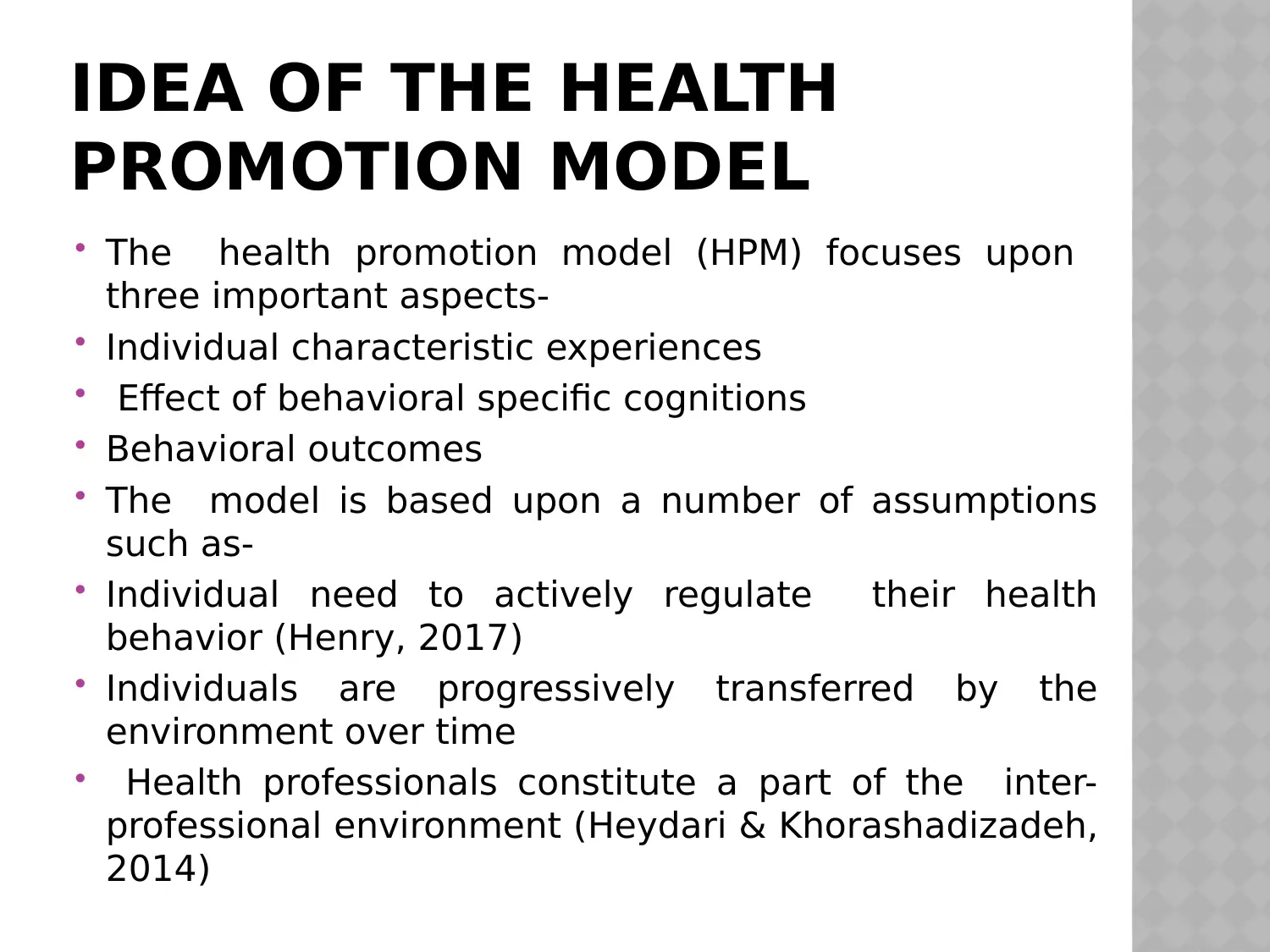
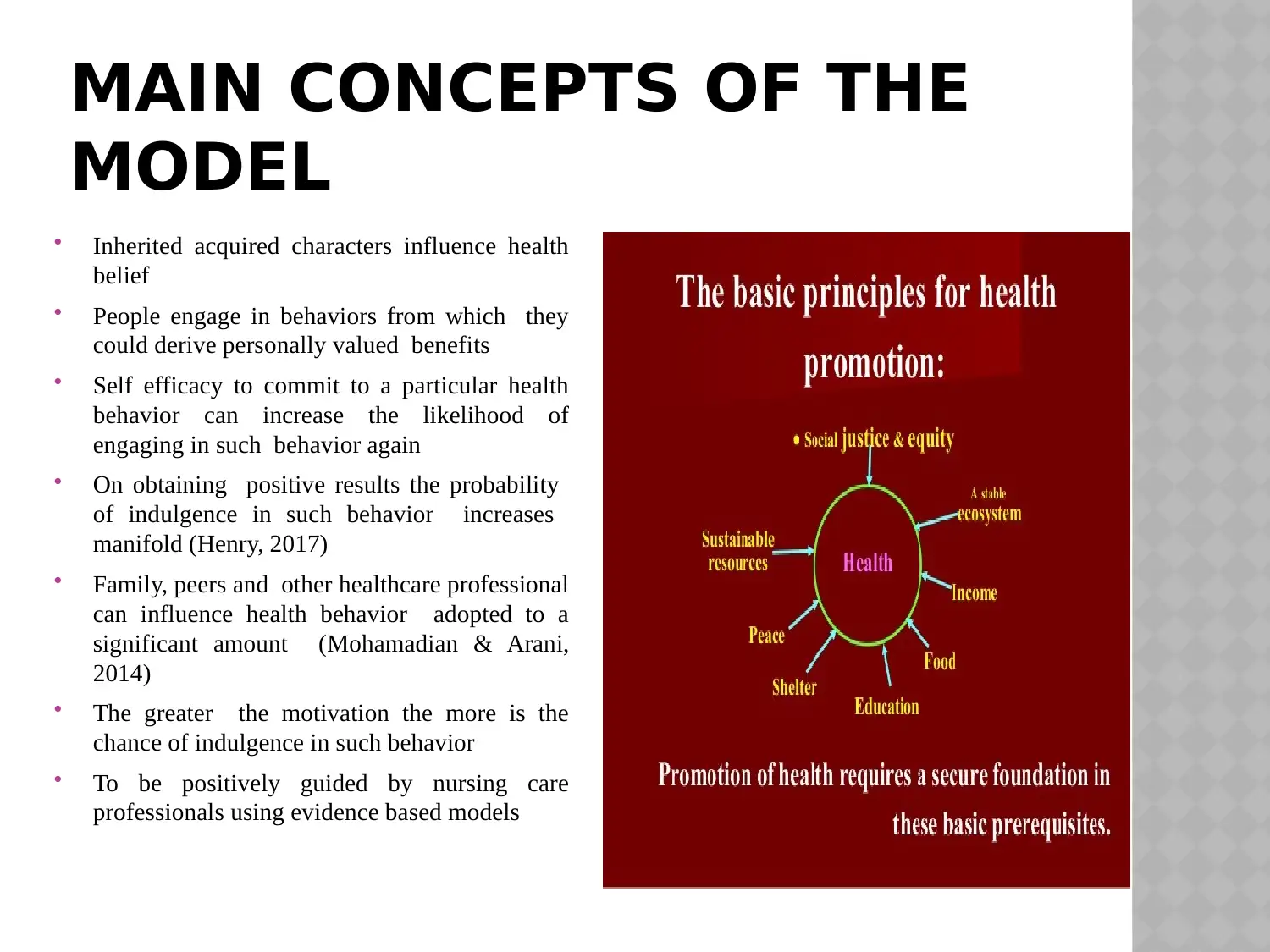
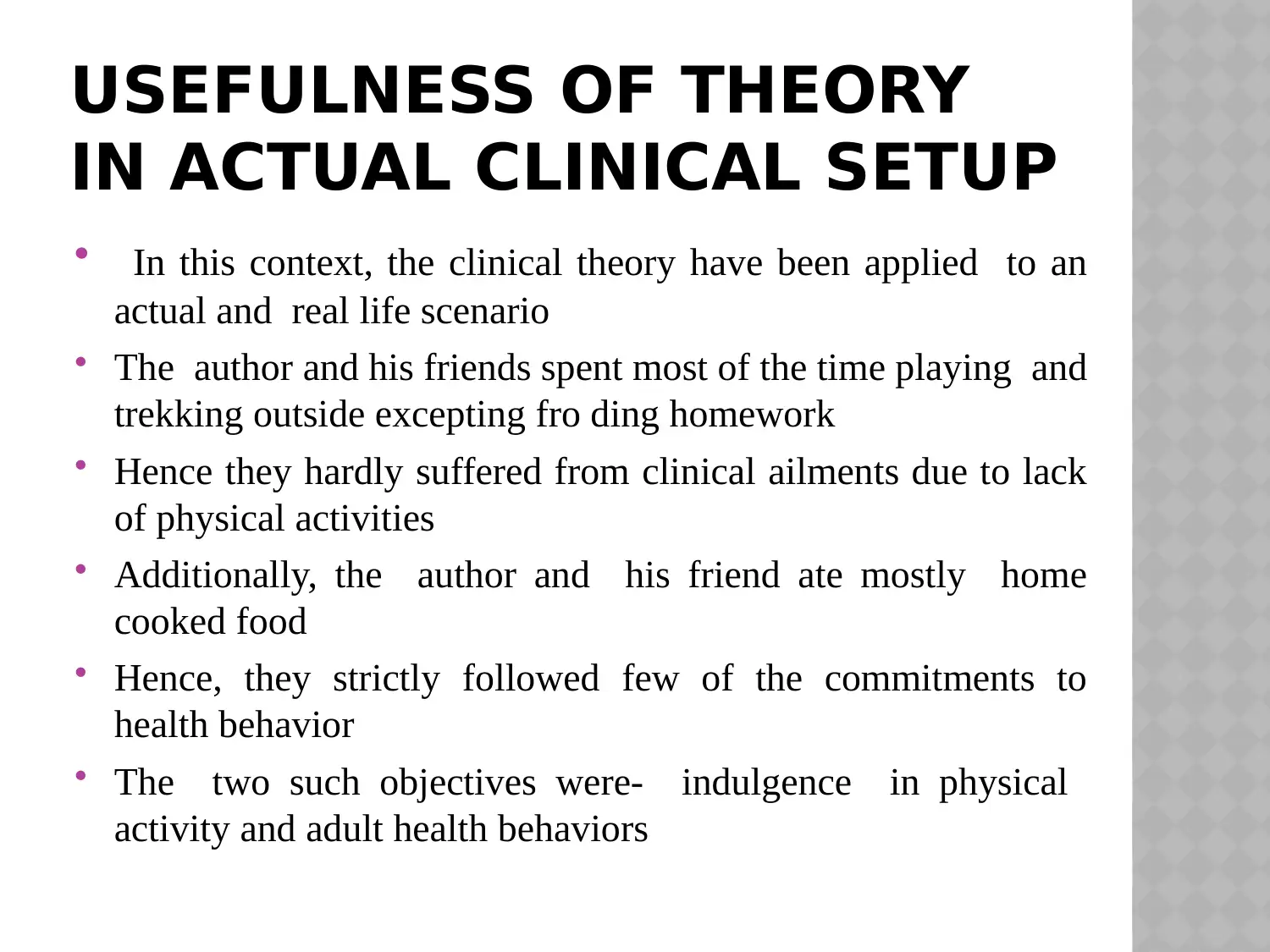
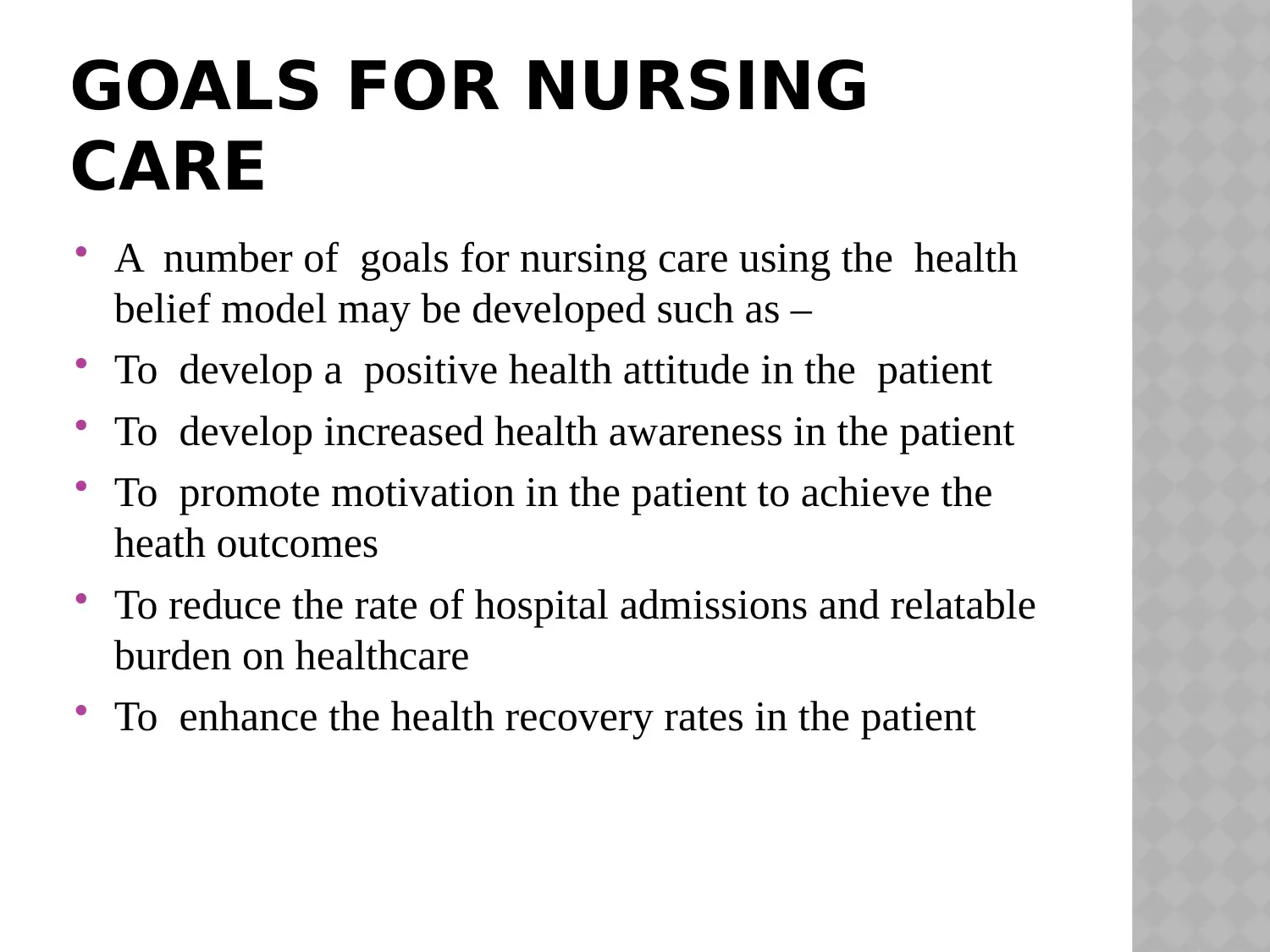
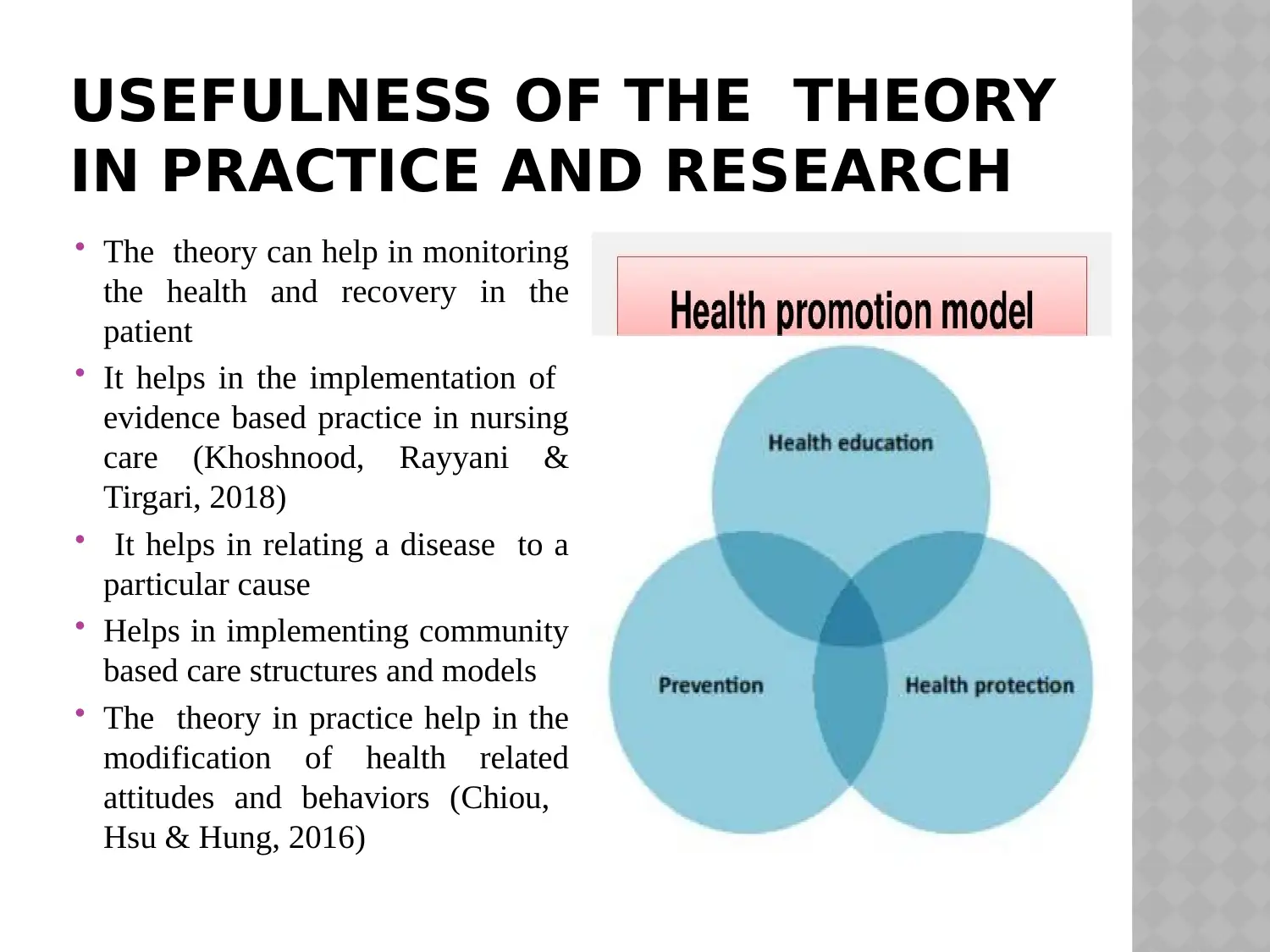
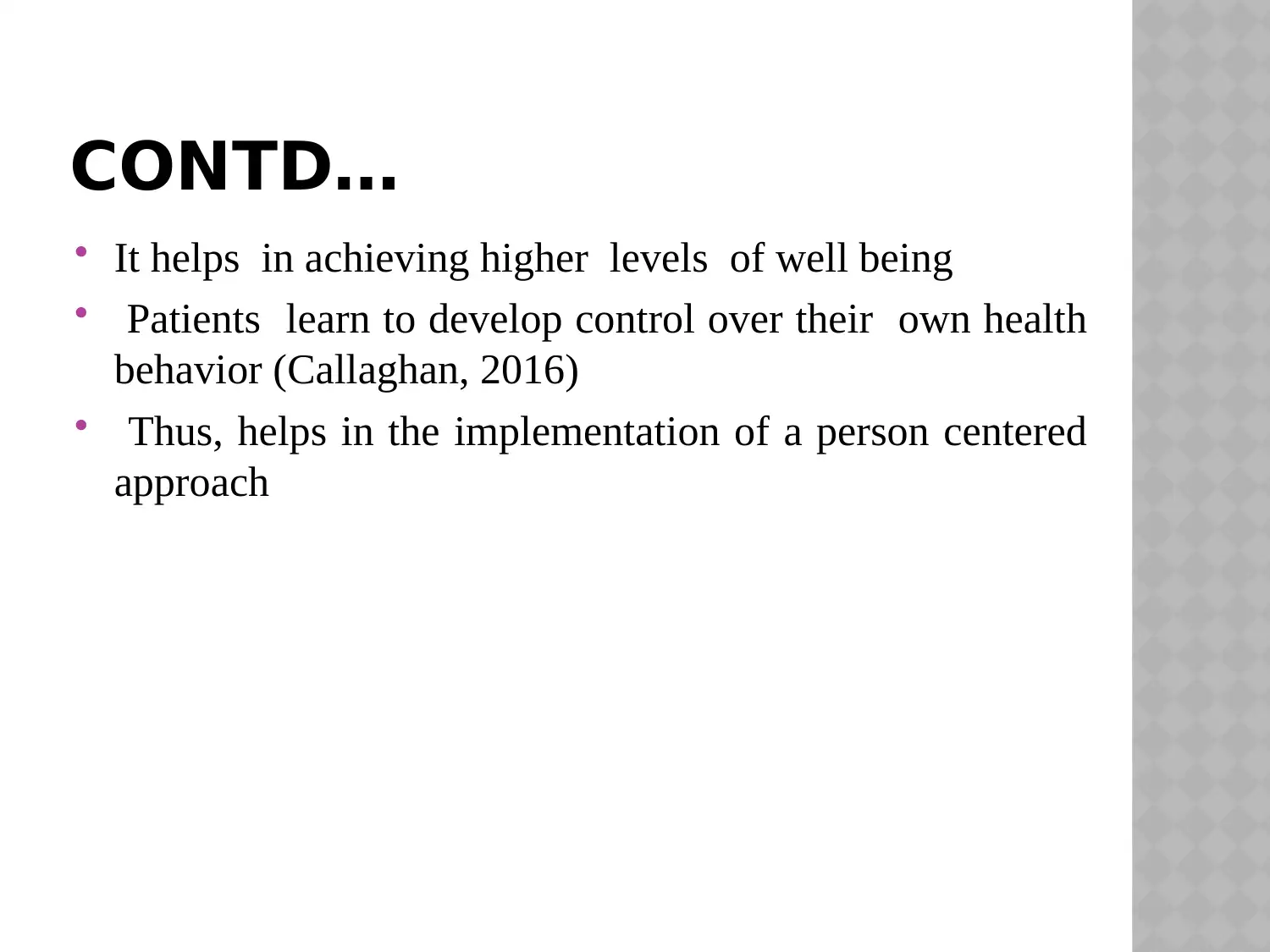
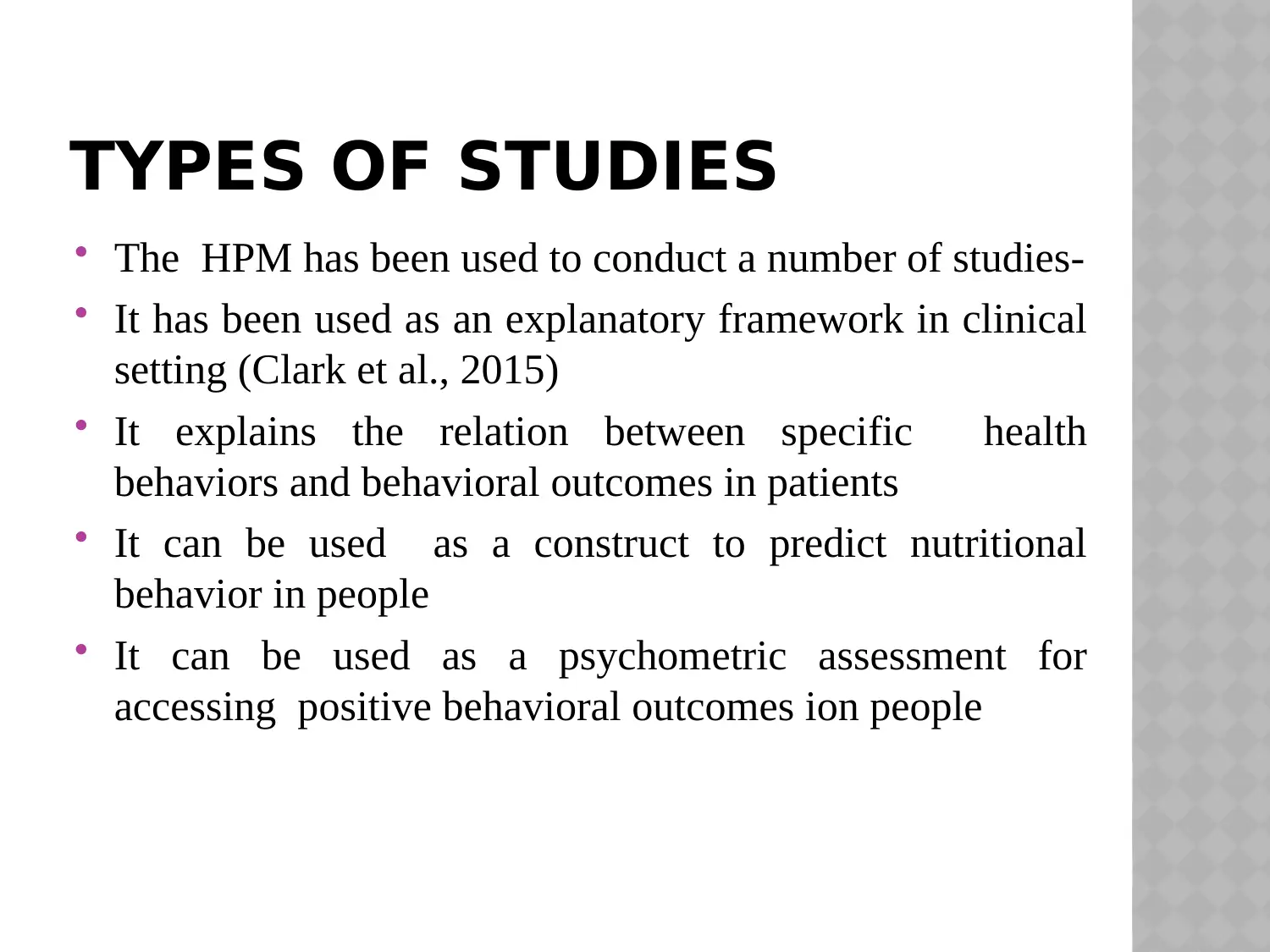






![[object Object]](/_next/static/media/star-bottom.7253800d.svg)